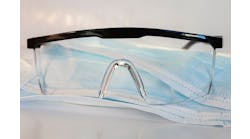We all know—or should know—that a pain in the body is a call for attention. In business, the same principle applies: If some area of your business is hurting, it’s time to give it some special attention. But just like some small pains in the body, sometimes we choose to ignore those pains until they become big pains. During the recession, I noticed some shop owners suddenly taking notice of problem areas they had been neglecting. The pain had become too big to ignore.
Back in September of 2011, I attended an auto body association meeting where the key speaker was Larry Baker, DuPont Performance Coatings’ executive facilitator. He spoke on “Who’s Winning, Who’s Losing and Why In The Collision Repair Industry,” but he quickly made the point that his focus would mainly be on who is winning and why. One of his key points was that most shop owners in the audience already knew there were people on their staff who were not top performers. He said to compete in today’s very challenging market, a shop can no longer afford to have less than top performing personnel. To win, a shop simply has to have better people than the competition. A shop owner has to face up to eliminating poor performers and paying what it takes to get the top people who can enable the shop to win.
During the recession, the cost of keeping poor performers became a pain that could no longer be ignored. In one shop I visited occasionally, I had noticed a couple of the estimators were far from being the business generators for the shop that a top-performing estimator has to be today. In fact, with today’s computerized estimating systems and parts locators, the estimating part of the job has become fairly simple.
The real job today could be renamed, “collision repair sales representative.” I’ve noticed in the best shops, estimators probe customers for family and friend referrals, business vehicle connections, and add-ons to fatten up the sale. Those old-time estimators just sitting around waiting for someone to drive in were dead weight and costing the shop owner lost revenue. And with the pain of the recession and lost revenue, he finally summoned up the determination to replace them with some hotshot sales-type estimators.
Similarly, a shop owner who has a technician who has been with the shop for many years may be reluctant to let that technician go. But Baker says many shops still function on 1952 processes and technician expectations. He said that today a top technician should be able to turn out $250,000 a month for a shop. He said the old paradigm of a manager telling a top technician how to do his job is more than obsolete. He says every tech should be capable of watching for continuous improvement and adding his or her knowledge and experience to help the shop win. Once again, with the pain of the recession and lost revenue, an owner may finally summon up the determination to replace older techs with top technicians who are also knowledgeable about hybrids, modern electronics and computerized vehicles.
Another painful indicator that some shop operators are finally starting to notice is what Larry Baker called “leading indicators.” When the end of the month comes, many shop owners only then look at financial statements and realize that jobs are down and profits along with them. Baker says too few shop owners really know how to read their financial statements, and even fewer of them do so in time to take corrective action when necessary. He calls end-of-the-month statements “lagging indicators.”
He says a winning shop owner should know how to thoroughly read the shop’s financial statements and balance sheets and then know how to fine-tune leading indicators—not lagging indicators—to continuously correct for changes that could threaten profits. For example, one shop that relies on several dealerships to send business didn’t notice until the end of the month that a competing shop had swiped one dealership deal right out from under him. Had he noticed earlier the significant drop in vehicles sent to his shop, he could have at least contacted the dealership manager to negotiate a better deal to keep the business.
One of the good things about business pains versus body pains is that generally you don’t need a specialist or costly diagnosis to tell you what is wrong. Correcting a business pain may also be a bit painful for the shop owner or manager, but a nice increase in efficiency and profitability can quickly make the pain go away, and that’s more than we can say of a lot of persistent body pains.
Tom Franklin, author of Strategies for Greater Body Shop Growth, has been a sales and marketing consultant for more than 40 years.




